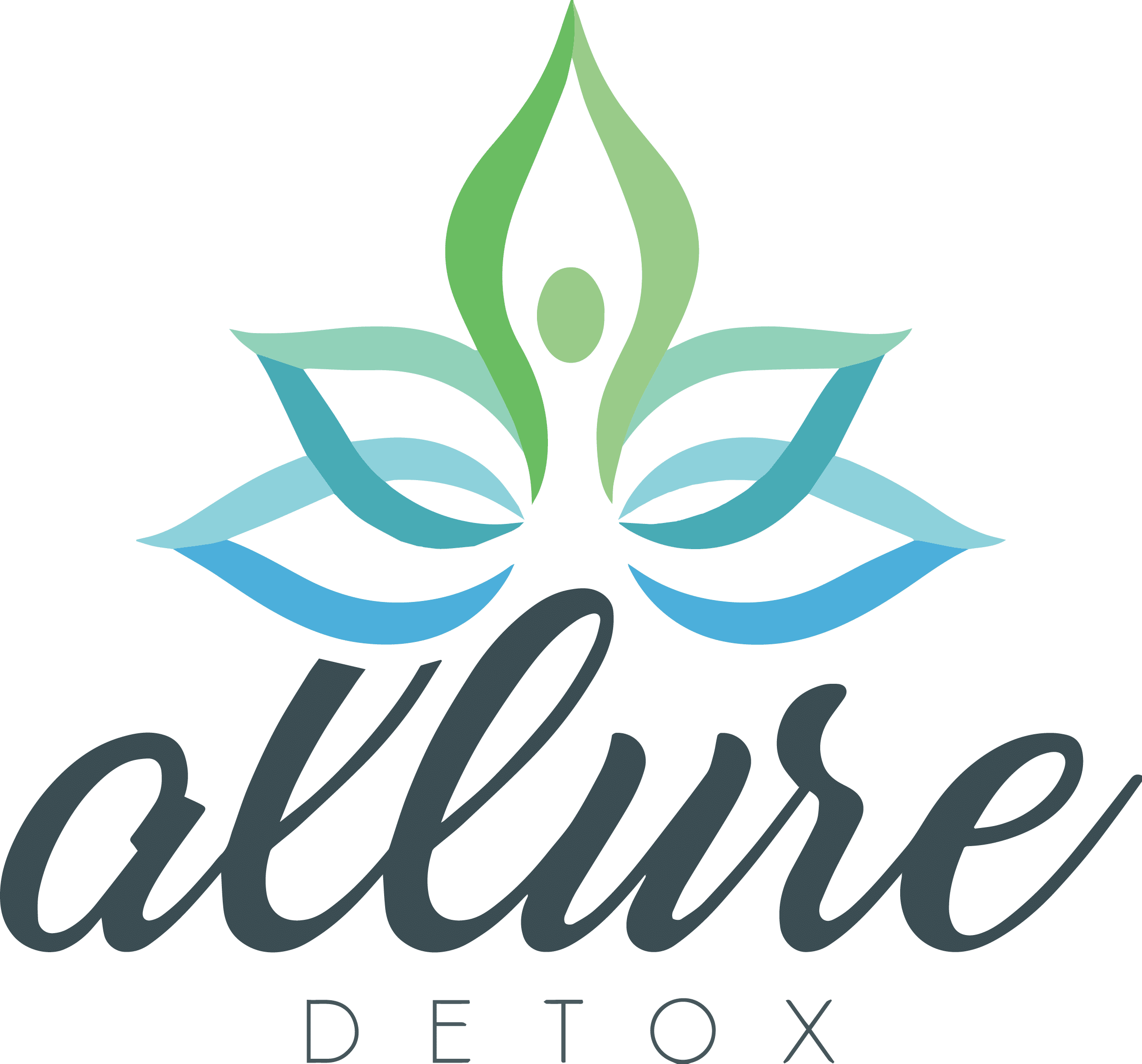Approximately 40 million U.S. adults, or 19 percent of the American population, suffer from anxiety. Out of that number, around seven percent of adults in the U.S. experienced Generalized Anxiety Disorder or GAD. Just under three percent of the population have panic disorder with 11 percent of adults in America experiencing at least one panic attack a day.
Both anxiety and panic disorder respond well to benzodiazepines. A recent study showed that around 12 percent of the American population reported using medications like Ativan and Klonopin to control their anxiety and panic disorder symptoms. This article explores what benzodiazepines are, the differences between Ativan and Klonopin and qualities like their pharmacological effectiveness and addiction risk.
Table of Contents
An Overview of Benzodiazepines
Since their accidental discovery in 1955, benzodiazepines have become one of the most commonly prescribed medications for anxiety and panic disorders. They first became available for medicinal use in 1960. By 1977, doctors worldwide prescribed them to patients with these conditions.
They target excessive nerve activity in the central nervous system or CNS. They also enhance the effects of gamma-aminobutyric acid, or GABA-A receptor to create anti-anxiety effects in the brain.

Benzodiazepines have proven effective for the treatment of anxiety disorders, including GAD and panic disorder. They remain safe for short-term use, most commonly for two to four weeks, although doctors may prescribe them for longer-term use for patients with more severe anxiety conditions.
Likewise, they typically start working right away, often within a matter of minutes, and remain effective for several hours, if not longer. People taking benzodiazepines must remain aware of what over-the-counter and prescription medicines to use with caution or avoid entirely. For example, medications like Ativan and Klonopin have adverse reactions when used with certain cold and allergy medications.
Alcohol likewise can alter the effect people obtain from benzodiazepines. Most pharmacists and doctors urge people to avoid drinking alcohol while taking these medications for anxiety and panic disorders.
Ativan (Lorazepam)
Ativan, also known by its generic name Lorazepam, remains one of the most commonly prescribed benzodiazepines for the treatment of anxiety and panic disorder. First patented in 1963, it became available for medical use in the United States in 1977. Its chemical formula is C15H10Cl2N2O2.
Along with anxiety and panic disorder, doctors commonly prescribe Ativan to treat other conditions like:
- Severe agitation
- Insomnia
- Alcohol withdrawal
- Seizures
- Chemotherapy-induced vomiting and nausea
It works quickly and enhances GABA activity in the brain, creating a calming effect throughout the body.
Patients have access to this medication in a variety of forms. The most common forms include pills, oral solutions, intravenous therapy and injections. Intravenous and injected Ativan typically start working within one to three minutes. Oral solutions and pills work within 30 minutes.
The common dosage for the treatment of anxiety or panic disorder ranges from two to three milligrams per day. Patients can take it twice daily, ingesting one to 1.5 milligrams for each dose.
Ativan remains effective in the body for six to eight hours on average and has a half-life of 12 hours. It exits a person’s system completely in 60 hours.
Klonopin (Clonazepam)
To treat anxiety disorders in patients, doctors commonly prescribe Klonopin, also known by its generic name Clonazepam. Invented in 1960, it became commercially available for the treatment of anxiety and panic disorder in 1975. Doctors today sometimes use it to treat conditions like:
- Bipolar mania
- Seizures
- Agitation with psychosis
- Obsessive control disorder or OCD
- Akathisia, or severe restlessness
Its chemical formula is 5-(2-chlorophenyl)-1,3-dihydro-7-nitro-2H-1,4-benzodiazepin-2-one. It works by targeting nerve cells in the brain, calming abnormal electrical activity, increasing GABA activity and creating a sense of calmness throughout the body.
Doctors typically prescribe Klonopin in either pill form or as a disintegrating tablet. When taken in pill form, the dosage can range from 0.25 to one milligram per day. Most doctors recommend patients split this amount between two doses taken at least 12 hours apart.
People who opt for the disintegrating tablet may start with an initial dose of 0.25 milligrams twice daily. Their doctor may gradually increase their dose to up to four milligrams per day once they become acclimated to its pharmacological effects.
Klonopin starts working for most patients within one to four hours and can last for eight to 12 hours. It has a half-life of 30 to 40 hours and completely exits the human body in five to 14 days.

Comparing Ativan and Klonopin
Ativan and Klonopin both remain viable benzodiazepines for treating panic and anxiety disorders, as well as conditions like seizures. They share many pharmacological qualities and enhance GABA activity in the brain.
However, they differ in several ways. Patients can determine which one may suit their medical needs by understanding the key differences between these two medications.
For example, Klonopin lasts longer, making it more effective for the treatment of anxiety. Alternatively, Ativan works faster, making it effective for the prompt relief of panic attacks.
Klonopin also works better for the treatment of akinetic and myoclonic seizures. Injections of Ativan work better for the treatment of status epilepticus.
Both Ativan and Klonopin can induce side effects patients should be aware of. Ativan, for example, can have side effects like:
- Drowsiness
- Muscle weakness
- Nausea and constipation
- Blurred vision
- Confusion
- Forgetfulness with longer-term use
Klonopin similarly can have side effects like:
- Dizziness
- Sleepiness
- Memory problems
- Nervousness
- Coordination and walking problems
- Increased production of saliva
Both of these benzodiazepines also carry with them the risk of dependency. To avoid addiction to either of them, patients should follow the prescribed instructions for use and also remain under the care of a physician while taking them.
Withdrawal symptoms of Ativan and Klonopin include nausea, muscle stiffness and sweating. Patients may also experience hand tremors, shakiness, hallucinations, fatigue and aches and pains when withdrawing from either of these medications.
Considerations for Choosing Between Ativan and Klonopin
Doctors consider several factors before prescribing benzodiazepines to patients. These factors include a patient’s age, medical history, health conditions and history of substance abuse. They also consider the severity and symptoms of a patient’s anxiety or panic disorder before deciding if and what type of benzodiazepine to prescribe.
Patients who take medications like Klonopin or Ativan need to know what substances to avoid to minimize the risk of negative interactions. For example, some over-the-counter cold and allergy medicines negatively interact with both of these benzodiazepines. They can cause increased sleepiness, agitation and poor coordination, among other side effects.
Alcohol and opioids induce similar side effects and can also depress a person’s breathing. Patients taking Klonopin or Ativan should avoid drinking alcohol. They should also inform their healthcare providers about their benzodiazepine prescription to avoid taking any medication that could cause negative interactions.
Patients should also follow the prescribed instructions for Klonopin and Ativan. Klonopin dosages range from 0.25 milligrams to one milligram per day, typically broken up into two doses spaced 12 hours apart. Ativan doses range from one to two milligrams a day, also broken into two separate doses.

Alternative to Benzodiazepines
Patients who want to avoid taking benzodiazepines may opt for medications like SSRIs or SNRIs. SSRI stands for Selective Serotonin Reuptake Inhibitors. They remain effective for treating not only anxiety disorders but also major depressive disorder and GAD.
They work by increasing serotonin levels in the brain while blocking the reabsorption of serotonin in the neurons. Common SSRI antidepressants include Celexa, Lexapro, Prozac, Paxil and Zoloft.
SNRI stands for Serotonin-norepinephrine Reuptake Inhibitors. Like SSRIs, these medications block the reuptake of serotonin in the brain. They also inhibit the brain’s ability to reuptake norepinephrine and prove effective in treating conditions like anxiety, depression and nerve and muscle pain. These medications include Cymbalta, Savella, Effexor and Pristiq.
Anxiety patients who prefer to avoid or minimize taking prescription anti-anxiety medications can also try talk therapy. According to the American Psychological Association, talk therapy helps 75 percent of patients learn to manage their anxiety and panic disorder symptoms.
Patients may also benefit from cognitive behavioral therapy or CBT. CBT teaches people with anxiety and panic disorder how to manage their symptoms through activities like journaling and exposure therapy. Some patients see improvement in their symptoms in as few as eight CBT sessions, according to the APA.
Other non-pharmacological alternatives to benzodiazepines include meditation and exercise. Some people successfully control their anxiety and panic attacks with activities like drawing, painting, listening to music or spending time with their pets.
Conclusion
Ativan and Klonopin provide effective relief for many patients who suffer from anxiety and panic disorders. They both work quickly, remain in the body for hours and remain a safe, short-term medicinal option to treat both of these conditions, along with conditions like seizures and agitation.
As you contemplate which one might work best for you, you should consult with a qualified medical professional like a psychiatrist who has experience prescribing and managing these medications. Seek professional advice, maintain ongoing communication with your provider and explore updated therapeutic and medical resources like pharmacological websites for managing your anxiety, panic disorder or other health conditions.
FAQ
How Long After Ativan Can I Drink?
Who Can Prescribe Klonopin?
How Long Can You Take Klonopin?
Published on: 2024-08-08
Updated on: 2025-06-05



